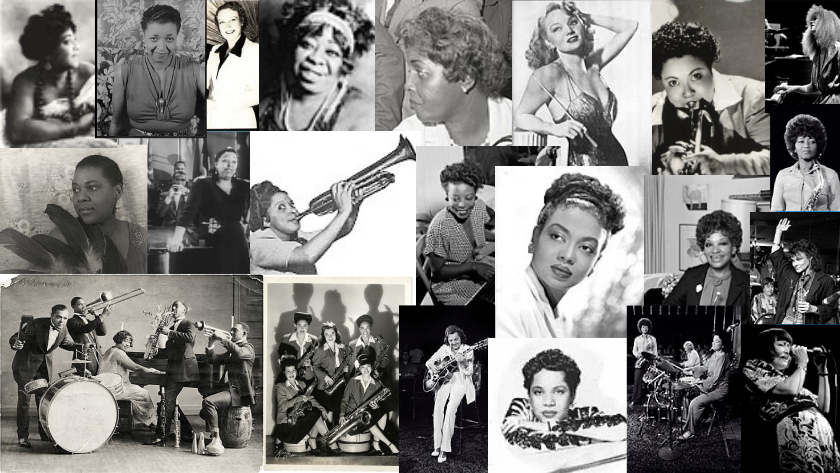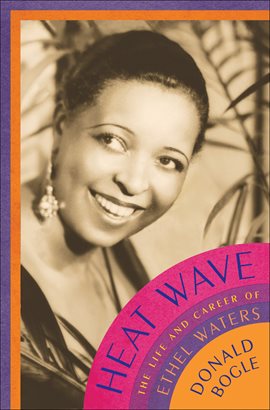
“I was around so many professionals, I mean truly wonderful musicians, with Jerry that I didn’t’ have half the trouble being accepted as a lot of women had. I was at least accepted by the guys, even though they didn’t hire me for those jobs; many a time a drummer who couldn’t swing half as well as I could would be hired. Those kinds of things used to hurt.”
Dottie Dodion in “American Women of Jazz” by Sally Placksin
Imagine being a male trumpet player and being told that there’s already a male trumpet player in a band and having another one would just seem weird. Or maybe you have a band and you’re trying to apply to perform at a festival but you’re told that an all male band just seems wrong. These things seem ludicrous but these are often the situations (or worse) that female performers face. Women in the music industry face everything, from constantly being a minority gender in music spaces and the discrimination that is inherent with that, to being sexually assaulted. They have faced barriers in education as well as a lack of models and mentors and are shut out of “boys club” networking. They are caught between a rock (the confidence gap) and a hard place (being perceived as too bossy.)
I came across a recent UK study, “Keychanges at Cheltenham Jazz Festival: Challenges for women musicians in jazz and ways forward for equal representation at jazz festivals” that shows an effort to improve the gender balance, even if just one festival at a time. The author of the study, Sarah Raine, was also the editor of a book, “Towards Gender Equality in the Music Industry” that I was able to get using our Interlibrary Loan services. Both sources show that there is still a massive imbalance even though there are efforts to close that gap. According to a 2021 NPR article, “Equal At Last? Women In Jazz, By The Numbers,” “of the top 50 albums each year, the share of women-led and co-led projects never ranged above 20% until 2019 when it finally reached 34%.” That 34% represents quite a gain and the best it’s been since they began tracking in 2007.
And of course, that gendering of jazz holds over to the listeners of jazz too. I’m deeply interested in the music industry and specifically women in jazz because someone near and dear to me (my daughter) has chosen this for her life. I grew up with jazz, played in a jazz band in high school, and have always loved supporting my daughter’s endeavors. And while gatekeeping women is a trend in all music spaces, it’s not surprising to me that jazz is seen as an especially male space. The word “jazz” originally comes from a vulgar slang.
But here’s the kicker: women have always been in jazz. There have been so many incredible musicians that have been forgotten or written out of history. Most of the women that we do remember in jazz are singers such as Ella Fitzgerald (1917-1996), Billie Holiday (1915-1959), and Lena Horne (1917-2010), which implies that women’s role in jazz is only as a vocalist and often reinforces the false impression that they are not “real musicians” – which is far from the case! A vocalist is an instrumentalist just as much as a saxophone player; vocalists just carry their instrument with them at all times. But there were so many more female jazz musicians than this! Often when they have been included, it is to the financial benefit of someone else (usually male).
I know that this list is far from complete, but I want to honor these women. Interestingly, a lot of them now have children’s books written about them so there’s hope for the future. And if you would like to see what modern female jazz musicians are doing, you can check out this list.
- Ida Cox (1811-1967) – vocals
- Gertrude “Ma” Rainey (1886-1939) – vocals, composer, mentor
- Leora Henderson (1888-1958) – trumpet, arranger, saxophone, she often played uncredited on recordings
- Bessie Smith (1894-1937) – vocals, composer, dancer

- Ethel Waters – (1896-1997) – vocals
- Mamie Smith (1891-1946)- vocals, piano – first Black artist of either gender to make a blues record
- Clara Smith (1894-1935) – vocals
- Alberta Hunter (1895-1994) – vocals, composer
- Doris Peavey (1895-1973) – piano, organ, accordion
- Rosa Henderson (1896-1968) – vocals
Lil Hardin Armstrong (1898-1971)- piano, band leader, composer, arranger, vocals – she was briefly married to Louis Armstrong and was the band leader of the “All-Girl Orchestra” which broadcast on NBC.
- Margie Creath Singleton (1899 in Ironton, Missouri-1982) – piano
- Edythe Trunham (~1900 -1950) – piano, band leader
- Mary Colston Kirk (~1900-?) – piano
- Dolly Jones (1902-1975) – trumpet, trombone – the first female jazz trumpeter to be recorded.
- Valaida Snow (1904-1956) – trumpet, vocals, violin, piano, leader, arranger, dancer – she appeared in Hollywood films and was nicknamed “Little Louis” and “Queen of the Trumpet”
- Peggy Gilbert (1905-2007) – reeds, vibes, vocals, band leader
- Ernestine “Tiny” Davis (~1909-1994) – trumpet, band leader
- Norma Teagarden (1911-1996) – piano, band leader
- Irma Young (1913-?)- alto saxophone, b-flat soprano saxophone, baritone saxophone, ukulele, tap dancer
- Jane Sager (1914-2012) – trumpet
- Ina Ray Hutton (1916-1984) – leader of the all woman swing band “The Melodears” and had her own TV show called the “Ina Ray Hutton Show”
- Billie Rogers (1917-2014) – trumpet, vocals, piano, organ, accordion, double bass, soprano saxophone – she had perfect pitch
- Betty Sattley Leeds (~1920-?)- tenor saxophone
- Estelle Slavin (?-?) – trumpet, band leader
- Irene Kitchings (1908-1975) – piano, band leader, composer
Maxine Sullivan (1911-1987) – vocals
- Helen Oakley Dance (1913-2001) – composer, producer
- Jane Jarvis (1915-2010)- piano, organ, producer, composer
- Una Mae Carlisle (1915-1996) – piano, vocals, composer – she was the first African-American on Billboard’s Top 100 and the first to host her own national radio show, and she wrote for Peggy Lee and Benny Goodman
- Marian McPartland (1918-2013) – piano and composer
- Mary Lou Williams (1920-1981) – piano, arranger, composer – she began her professional career in 1922 at the age of 8 and became a mentor to Thelonious Monk, Charlie Parker, Miles Davis, Tad Dannon, Bud Powell, and Dizzy Gillespie
- Hazel Scott (1920-1981) – piano, vocals, she had perfect pitch – studied at Julliard when she was 8 and was the first African-American to host her own TV show
Melba Liston (1920-1999) – trombone, composer, arranger, band leader, vocals
- Mary Osborne (1921-1992) – guitar, vocals
- Evelyn McGee Stone (1920-2011) – vocals
- Jutta Hipp (1925-1958) – piano, composer – she supported herself as a professional jazz pianist from an early age and was the first female instrumentalist to record on the Blue Note label
- Clora Bryant (1927-2019) – trumpet composer
- Fagle Liebman (?-2011) – drums, arranger, vocals
- Flo Dreyer (?-?) – trumpet, valve trombone, leader
- June Rotenberg (1926-?) – bass
- Lucille Dixon (1923-2004) – bass, band leader
- Dorothy Donegan (1922-1998) – piano, vocals
- Carline Ray (1925-2013) – Fender bass, guitar, piano, acoustic bass, vocals
- Sarah McLawler (1926-2017) – piano, organ, vocals, composer
- Norma Shepherd (1940-?) – piano, vocals
Dottie Dodgion (1929-2021) – drums
- Sheila Jordan (1928-?) – vocals
- Vi Redd (1928-?) – alto saxophone, soprano saxophone, vocals, band leader
- Willene Barton (1930-?) – tenor saxophone, band leader
- Patti Brown (1931-2008) – piano, composer, band leader, vocals
- Dorothy Ashby (1932-1986) – harp, piano, composer, vocals
- Corky Hale (1936-?) – harp, piano/organ/flute, piccolo, cello
Carla Bley (1936-?) – composer, keyboards, saxophone, band leader
- JoAnne Brackeen (1938-?) – piano, composer, educator
- Barbara Donald (1942-2013) – trumpet, composer, band leader
- Ann Patterson (1946-?) – reeds, band leader – formed her own all-female big band, Maiden Voyage, in 1981
- Janice Robinson (1951-?) – trombone, trumpet, band leader, composer
- Erica Lindsay (1955-?) – reeds, band leader, composer
- Jane Ira Bloom (1955-?) – tenor saxophone, alto saxophone, soprano saxophone, band leader, composer
- Fostina Dixon (1956-?) – reeds, flute, band leader, composer, vocals
- International Sweethearts of Rhythm (1937-1949) – the first integrated all-women’s band in the United States
- Pauline Braddy Williams (1922-1996) – drums, vocals, a founding member of The Sweethearts of Rhythm
- Norma Carson (1922-2005) – trumpet
- Helen Jones Woods (1923-2020) – trombone, a founding member of The Sweethearts of Rhythm
- Bridget O’Flynn (1923-?) – drums
- Anna Mae Winburn (1912-1999) – band leader, vocals, guitar, a founding member of The Sweethearts of Rhythm
- Willie Mae Wong 1920-2016) – baritone saxaphone, a founding member of The Sweethearts of Rhythm
Image credits: Peggy Gilbert; Lil Armstrong (Boris Carmi /Meitar Collection / National Library of Israel / The Pritzker Family National Photography Collection / CC BY 4.0); Ernestine Davis; Carla Bley (Brian McMillen/license); Clora Bryant (Howcheng/ license); Vi Redd (Saga City/ license); Ann Patterson (Howcheng/ license); Edythe Turnham with permission from The Black Heritage Society of Washington State, Inc.; International Sweethearts of Rhythm (International Sweethearts of Rhythm Collection, Archives Center, National Museum of American History); Mary Osbourne (FlickreviewR/ license); Vi Redd (FlickreviewR/ license); Sheila Jordan (Brian McMillen/license); all others reside in the Public Domain.


